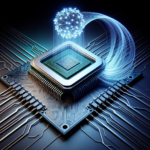Understanding CPU Sockets and Compatibility

Understanding CPU Sockets and Compatibility
In the world of computing, the Central Processing Unit (CPU) is often referred to as the brain of the computer. However, for this brain to function effectively, it needs to be properly connected to the motherboard. This connection is facilitated by the CPU socket. Understanding CPU sockets and their compatibility is crucial for anyone looking to build, upgrade, or repair a computer. This article delves into the intricacies of CPU sockets, their types, and how to ensure compatibility with other components.
What is a CPU Socket?
A CPU socket is a physical interface on the motherboard that houses the CPU. It provides both the mechanical and electrical connections between the CPU and the motherboard. The socket ensures that the CPU is securely attached and can communicate with other components of the computer system.
Types of CPU Sockets
There are several types of CPU sockets, each designed to accommodate specific CPU models and architectures. The two main categories are:
- Pin Grid Array (PGA): In PGA sockets, the pins are located on the underside of the CPU, which fits into corresponding holes in the socket. This type is commonly used by AMD processors.
- Land Grid Array (LGA): In LGA sockets, the pins are located on the socket itself, while the CPU has flat contact points. This type is predominantly used by Intel processors.
Common CPU Socket Types
Over the years, various CPU socket types have been developed. Some of the most common ones include:
- LGA 1151: Used by Intel’s 6th, 7th, 8th, and 9th generation Core processors.
- LGA 1200: Designed for Intel’s 10th and 11th generation Core processors.
- AM4: Utilized by AMD’s Ryzen series processors.
- TR4: Used by AMD’s Threadripper processors.
Importance of CPU Socket Compatibility
Ensuring that the CPU and motherboard are compatible is essential for the proper functioning of a computer. Incompatibility can lead to various issues, including system instability, inability to boot, or even physical damage to the components.
Factors Affecting Compatibility
Several factors influence CPU socket compatibility:
- Socket Type: The CPU and motherboard must have matching socket types. For example, an Intel LGA 1151 CPU will not fit into an LGA 1200 socket.
- Chipset: The motherboard’s chipset must support the specific CPU model. Even if the socket type matches, an incompatible chipset can prevent the CPU from functioning correctly.
- BIOS Version: The motherboard’s BIOS must be updated to support newer CPU models. Manufacturers often release BIOS updates to add compatibility for new processors.
- Power Requirements: Different CPUs have varying power requirements. Ensure that the motherboard can provide adequate power to the CPU.
How to Check CPU and Motherboard Compatibility
Before purchasing a CPU or motherboard, it’s essential to verify their compatibility. Here are some steps to help you:
1. Identify the CPU Socket Type
Check the specifications of the CPU to determine its socket type. This information is usually available on the manufacturer’s website or product packaging.
2. Check the Motherboard Specifications
Review the motherboard’s specifications to ensure it has the correct socket type and chipset for the CPU. This information can be found on the manufacturer’s website or in the user manual.
3. Verify BIOS Compatibility
Ensure that the motherboard’s BIOS version supports the CPU. Check the motherboard manufacturer’s website for BIOS updates and compatibility lists.
4. Consider Power Requirements
Ensure that the motherboard can provide sufficient power to the CPU. Check the CPU’s Thermal Design Power (TDP) and compare it with the motherboard’s power delivery capabilities.
Upgrading Your CPU: What You Need to Know
Upgrading your CPU can significantly boost your computer’s performance. However, it’s essential to consider several factors to ensure a smooth upgrade process.
1. Compatibility Check
As discussed earlier, verify that the new CPU is compatible with your existing motherboard. Check the socket type, chipset, BIOS version, and power requirements.
2. Cooling Solutions
Upgrading to a more powerful CPU may require a better cooling solution. Ensure that your current cooling system can handle the increased heat output. If necessary, invest in a high-quality CPU cooler.
3. Installation Process
Installing a new CPU involves several steps:
- Power Down and Disconnect: Turn off your computer and disconnect all cables.
- Remove the Old CPU: Open the computer case, locate the CPU socket, and carefully remove the old CPU.
- Install the New CPU: Align the new CPU with the socket and gently place it in position. Secure it using the socket’s locking mechanism.
- Apply Thermal Paste: Apply a small amount of thermal paste to the top of the CPU to ensure proper heat transfer.
- Attach the Cooler: Reattach the CPU cooler, ensuring it is securely fastened.
- Reconnect and Power Up: Reconnect all cables and power on your computer. Enter the BIOS to verify that the new CPU is recognized.
Common Issues and Troubleshooting
Even with careful planning, issues can arise during a CPU upgrade. Here are some common problems and their solutions:
1. Computer Fails to Boot
If your computer fails to boot after installing a new CPU, check the following:
- Ensure that the CPU is properly seated in the socket.
- Verify that the BIOS is updated to support the new CPU.
- Check for any bent pins on the CPU or socket.
- Ensure that all power connections are secure.
2. Overheating Issues
If your CPU is overheating, consider the following solutions:
- Ensure that the CPU cooler is properly installed and making good contact with the CPU.
- Check that the thermal paste is applied correctly.
- Ensure that your computer case has adequate airflow and ventilation.
- Consider upgrading to a more efficient cooling solution.
3. System Instability
If your system is unstable after a CPU upgrade, try the following:
- Verify that the motherboard’s chipset supports the new CPU.
- Ensure that the power supply can handle the increased power requirements.
- Check for any BIOS settings that may need adjustment.
- Run stress tests to identify any potential hardware issues.
FAQ
What is the difference between PGA and LGA sockets?
PGA (Pin Grid Array) sockets have pins on the underside of the CPU that fit into corresponding holes in the socket. LGA (Land Grid Array) sockets have pins on the socket itself, while the CPU has flat contact points. PGA is commonly used by AMD processors, while LGA is predominantly used by Intel processors.
Can I use an Intel CPU on an AMD motherboard?
No, Intel and AMD CPUs use different socket types and architectures, making them incompatible with each other’s motherboards.
How do I find out what socket my CPU uses?
You can find the socket type of your CPU by checking the specifications on the manufacturer’s website or product packaging. Alternatively, you can use software tools like CPU-Z to identify your CPU’s socket type.
Do I need to update my BIOS when upgrading my CPU?
In many cases, updating the BIOS is necessary to ensure compatibility with newer CPU models. Check the motherboard manufacturer’s website for BIOS updates and compatibility lists.
What happens if I install an incompatible CPU?
Installing an incompatible CPU can lead to various issues, including system instability, inability to boot, or even physical damage to the components. Always verify compatibility before installing a new CPU.
Conclusion
Understanding CPU sockets and compatibility is essential for anyone looking to build, upgrade, or repair a computer. By ensuring that your CPU and motherboard are compatible, you can avoid potential issues and ensure optimal performance. Always verify socket type, chipset compatibility, BIOS version, and power requirements before making any upgrades. With careful planning and attention to detail, you can successfully upgrade your CPU and enjoy improved performance and functionality.




